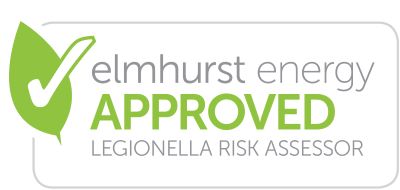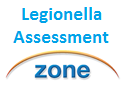 GlenWaldren
GlenWaldren 
Dip HI, Dip DEA, HND, HCIM
Property Surveyor & Energy Assessor for Camberley
Locations UK:
Surrey EPC - Ash, Ashvale, Bagshot, Brookwood, Camberley, Deepcut,
Farnham, Frimley, Frimley Green,Guildford',Lightwater, Pirbright,Tongham. Woking, Windlesham,
Berkshire EPC -Ascot , Bracknell ,Crowthorne, Reading, Sunningdale,Sandhurst., Wokingham
Hampshire EPC - Aldershot, Basingstoke, Cove, Farnborough, Fleet, Hook. Yateley
Department for Levelling up, Housing and Communites

Legionella Risk Assessments (LRA)
LRA s required under The Health and Safety at Work Act for Let Properties
Book for Today / Tomorrow
You receive the Certificate same day as Inspection
Tel: 07595 293900 / 01252 274449 Email
What is legionella?
Legionella Pneumophila, commonly referred to simply as 'legionella', is a bacterium that causes the infection Legionellosis. Legionella bacteria are common in natural watercourses such as rivers and ponds.
The disease has two distinct forms:
- severe � Legionnaires' Disease, a well-known potentially fatal pneumonia
- mild � less severe illness, also known as Pontiac fever and Lochgoilhead fever
Legionnaires' Disease acquired its name in 1976 when an outbreak of pneumonia occurred among persons attending a convention of the American Legion in Philadelphia. Later, the bacterium causing the illness was named legionella.
Who is at risk from legionella?
Infection is caused by breathing in small droplets of water contaminated by the bacteria. The disease cannot be passed from one person to another.
Everyone is potentially susceptible to infection but some people are at higher risk, e.g. those over 45 years of age, smokers and heavy drinkers, those suffering from chronic respiratory or kidney disease, and people whose immune system is impaired.
Legionnaires� Disease is serious in elderly and infirm patients; pneumonia is a common cause of death in people over 70 who contract Legionnaires' Disease.
Legionnaires' Disease can be very serious and is fatal in 5% to 30% of cases. Most cases can be treated successfully with antibiotics and healthy people usually recover.
Where is legionella a potential problem?
Since legionella bacteria are widespread in the environment, they may contaminate and grow in other water systems such as cooling towers, evaporative condensers and hot and cold water services.
They can survive low temperatures, but are killed by high temperatures. Legionella thrives between 20�C- 50�C if the conditions are right, e.g. if a supply of nutrients is present, such as rust, sludge, scale, algae and other bacteria.
Simple steps can be taken by the owners of premises to ensure these unfavourable conditions are avoided.
A wide range of organisations, groups, or self-employed individuals providing residential accommodation are responsible for the water system(s) in their premises, and will have duties in this regard, including:
- local authorities
- universities
- housing associations, including housing companies
- charities
- hostels
- landlords in the private renting sector
- managing agents
- hoteliers, B&B, guest house and holiday camp owners
- caravan and camping site owners, including fixed caravan sites
Legal duties and obligations around legionella
Health and Safety Executive Link:
As well as the moral duty of employers to protect employees and members of the public, General health and safety legislation covers all employers and workplaces including tenanted properties as these in effect are businesses..
This includes protecting employees and the public from risks associated with legionella.
Employers should consider the risks from legionella that may affect staff or members of the public and take suitable precautions.
Employers or persons in control of premises (e.g. landlords) should:
- identify and assess sources of risk
- prepare a scheme (or course of action) for preventing or controlling the risk
- implement and manage the scheme � appointing a person to be managerially responsible, sometimes referred to as the �responsible person�
- keep records and check that what has been done is effective
- if appropriate, notify the local authority of any a cooling tower(s) on site.
The Control of Substances Hazardous to Health (COSHH) Regulations The COSHH regulations apply to micro-organisms such as legionella. The Health and Safety Executive's Approved Code of Practice and guidance, Legionnaires' Disease � The Control of legionella bacteria in water systems (L8) gives guidance in relation to the COSHH regulations.
The Reporting of Incidents and Dangerous Occurrences Regulations (RIDDOR) Cases of legionellosis at work are reportable under RIDDOR.
How to reduce the risks from legionella
There are a number of ways to avoid or reduce risks from legionella:
Assess the risks and implement controls As with all other workplace hazards, potential exposure to legionella should be risk assessed. Based on the risk assessment, employers or responsible persons may have to implement a water treatment, cleaning and disinfection regime as controls. If this is done by an outside contractor, they must be competent to do the job.
Use alternative systems Consider the type of water system needed. For example, is it possible to replace a wet cooling tower with a dry air-cooled system?
Design, maintenance and operation Design, maintain and operate your water services under conditions that prevent or control the growth and multiplication of legionella.
Keep water tanks clean from Algae, rust and deposits and this will reduce the risk of legionella,.
Keep water hot One way of controlling legionella is to keep water hot, which may already happen for other reasons.
For example, nursing homes and residential care homes tend to keep water hot for kitchen and laundry use, to ensure proper boiler operation, or to take account of long pipe runs.
However, the risks of scalding must also be considered and appropriate measures taken to prevent burns.
If vulnerable people can get access to baths or showers, the Health and Safety Executive strongly advises the fitting of thermostatic mixing valves that prevent water being discharged at more than 43�C. Valves should be fitted according to manufacturer�s instructions and will need regular maintenance.
Routine assessment for legionella should be included as part of monitoring regimes for Landlords, this could be when a change of tenant occurs or on a periodic inspection once a year.
Observe the Approved Code of Practice (ACoP) Updated in 2000, the Health and Safety Executive's Approved Code of Practice now applies to all water systems from which there is a risk from legionella, including all hot water systems in the workplace, regardless of their capacity, and wet cooling systems.
A useful summary of the ACoP for residential landlords is contained in an available HSE leaflet
Email:Enquiry@ G-Whis.net
Elmhurst Accreditation Scheme Number: EES 007530 Code of Conduct
Contact Details: Glen Waldren Tel:01252 274449 Email: Enquiry@G-Whis.net
Available from 7am to 7pm, 6 days a week Working Area within 35 miles of Camberley
All Surveys attract no VAT




